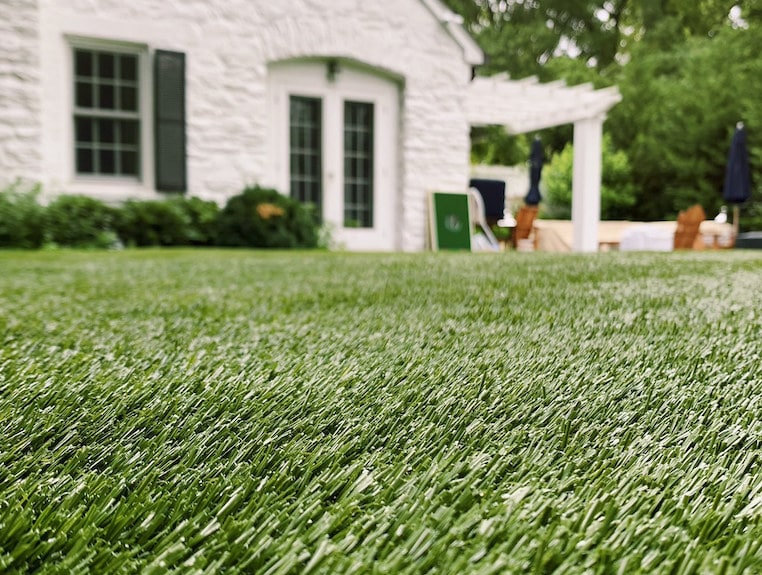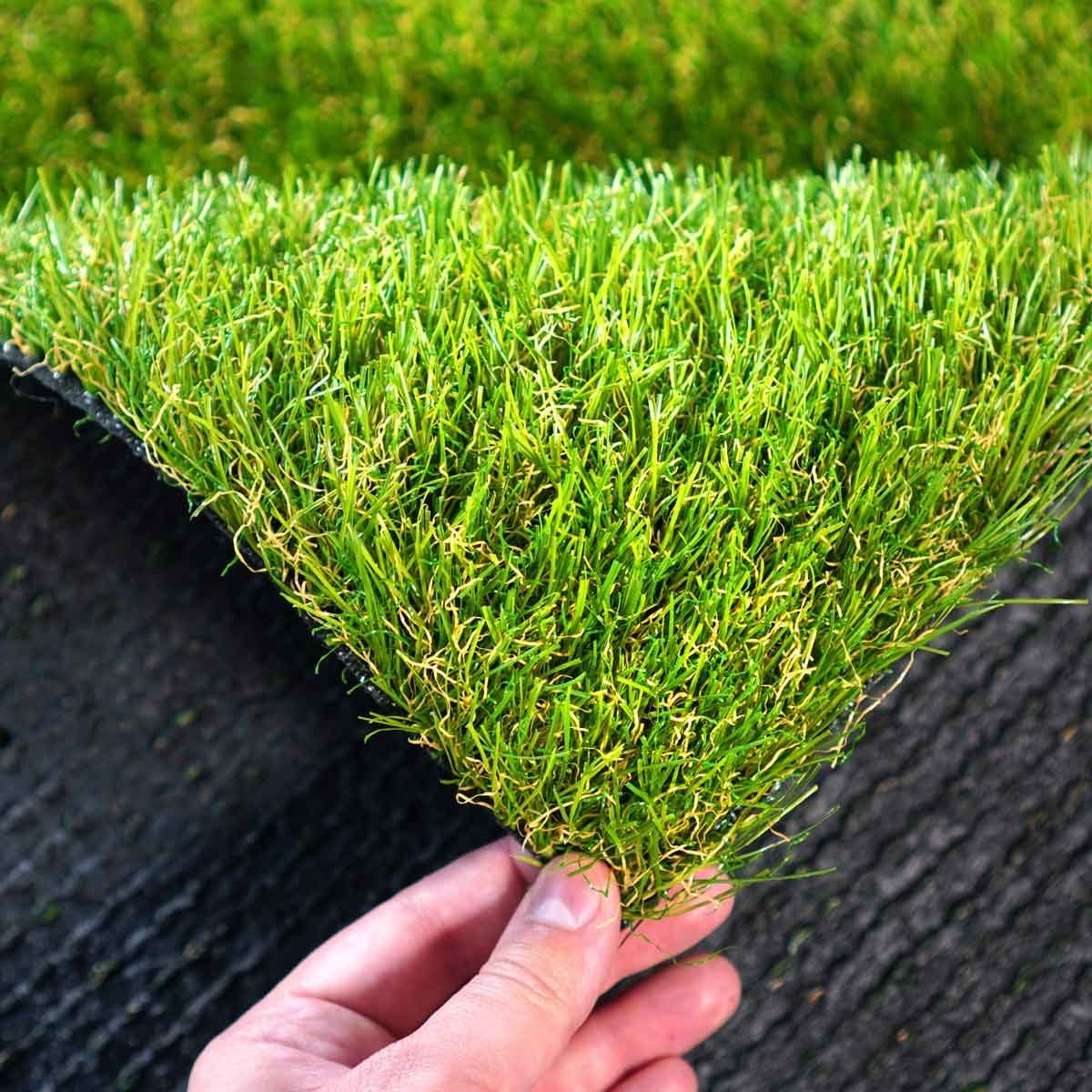Look Into the Environmental Advantages of Opting for Synthetic Grass Solutions
The adoption of fabricated lawn options provides an engaging chance to deal with pushing environmental challenges. By substantially minimizing water use and decreasing the application of damaging chemicals, these choices not only promote lasting landscaping however additionally protect local environments.
Water Conservation Benefits
One of the most substantial advantages of man-made grass is its capability to save water. In contrast, man-made turf does not require watering, dramatically lowering the overall need for water sources.
By getting rid of the requirement for normal watering, synthetic grass adds to sustainable landscape practices and aids reduce the ecological effect of too much water consumption. The conservation of water expands to the decrease of runoff, which can lead to dirt erosion and waterway air pollution.
Additionally, the setup of synthetic turf permits towns and property owners to assign water resources extra effectively, concentrating on vital usages such as drinking water and farming. The change in the direction of synthetic grass not only promotes liable water usage however additionally aligns with wider ecological objectives intended at maintaining natural deposits.
As areas increasingly focus on sustainability, the water conservation benefits of fabricated lawn present a compelling instance for its adoption in commercial and household landscape design tasks.
Decreased Chemical Usage
The change to synthetic lawn significantly reduces the dependence on chemical treatments commonly made use of in all-natural turf upkeep. Standard turf administration normally includes the application of herbicides, plant foods, and chemicals to promote development and control bugs. These chemicals can present risks to human wellness, neighborhood wild animals, and the atmosphere, adding to soil and water contamination.
In contrast, synthetic grass eliminates the demand for these damaging materials. Once installed, it needs minimal maintenance, primarily including normal cleansing and irregular infill replenishment. This reduction in chemical usage not only benefits the prompt setting yet likewise adds to broader eco-friendly security. By reducing the release of artificial substances right into the ecosystem, man-made turf advertises healthier dirt and water systems.
In addition, the lack of chemical drainage related to fabricated lawn installations helps shield local waterways from pollution, sustaining water life and keeping biodiversity. Arizona artificial turf. As areas progressively prioritize sustainable techniques, going with fabricated turf provides a sensible remedy that aligns with environmental preservation objectives. With this change, homeowner can take pleasure in rich eco-friendly areas without compromising eco-friendly wellness, leading the way for a more lasting future
Lower Carbon Footprint

Moreover, the installation of synthetic grass can cause substantial water preservation. Natural grass need significant amounts of water for irrigation, which not just includes to the carbon footprint connected with water extraction and therapy but likewise strains regional water resources. On the other hand, synthetic grass requires minimal maintenance, requiring no watering, thus dramatically lowering water use and its associated power prices.
Furthermore, the longevity of artificial lawn adds to its lower carbon effect. With a lifespan of as much as 15 years or even more, the need for frequent substitutes is lessened, resulting in much less waste and reduced energy consumption in production and taking care of conventional grass options. click reference Overall, fabricated turf offers a sustainable option for eco mindful landscaping.
Habitat Conservation
Environment preservation is a crucial consideration in the dispute over landscaping selections, specifically when contrasting synthetic turf to all-natural yard. Natural turf lawns frequently call for considerable maintenance, including making use of herbicides, plant foods, and pesticides, which can negatively impact local environments. These chemicals can leach right into the soil and waterways, harming indigenous vegetation and fauna and interfering with neighborhood environments.
On the other hand, synthetic grass provides a possibility to minimize the environmental footprint of landscape design. By going with synthetic lawn, house owners can reduce the disruption of natural habitats linked with standard grass treatment techniques. Synthetic grass removes the need for damaging chemicals, thereby protecting nearby wildlife and maintaining the stability of bordering ecological communities. Additionally, the installation of fabricated turf can cause the conversion of previous yard areas into even more biodiverse landscapes, such as pollinator gardens or indigenous plant locations, which can support regional wild animals.
Eventually, the shift to man-made grass not only conserves water and lowers upkeep initiatives yet likewise promotes an extra unified relationship between human tasks and the natural surroundings, promoting habitat conservation at the same time.
Long-Term Sustainability
Lasting sustainability is an essential factor in assessing the benefits of artificial lawn over standard yard yards. One of one of the most substantial advantages of synthetic grass is its toughness; it can last as much as 15-20 years with minimal maintenance, whereas all-natural turf calls for regular reseeding and substitute. This longevity reduces the requirement for constant sources, such as water, fertilizers, and chemicals, which are important for preserving a healthy turf yard.
Furthermore, synthetic grass adds to a reduction in carbon exhausts connected with grass treatment equipment. Typical grass usually need gas-powered mowers, leaners, and blowers, every one of which contribute to air pollution. Artificial turf companies phoenix. On the other hand, synthetic grass eliminates the need for such devices, promoting a cleaner atmosphere
Moreover, the manufacturing of fabricated grass progressively uses recycled products, enhancing its sustainability profile. As manufacturers take on eco-friendly practices, the environmental impact of artificial grass remains to reduce.

Conclusion
The adoption of synthetic grass services presents considerable ecological benefits, including considerable water conservation, minimized reliance on harmful chemicals, and a lower carbon impact. Artificial turf help in protecting natural habitats by minimizing land continue reading this disruption and promoting lasting sustainability with the usage of resilient products. Jointly, these variables highlight the potential of synthetic grass to add positively to helpful resources ecological health and use a practical option to typical landscape design practices in a significantly resource-conscious world.
In comparison, man-made grass does not need watering, significantly decreasing the total need for water sources. By decreasing the launch of synthetic substances into the ecosystem, fabricated turf advertises much healthier soil and water systems.
Additionally, the setup of artificial turf can result in considerable water conservation. In contrast, synthetic lawn requires minimal upkeep, needing no watering, thereby substantially decreasing water use and its linked energy costs.
